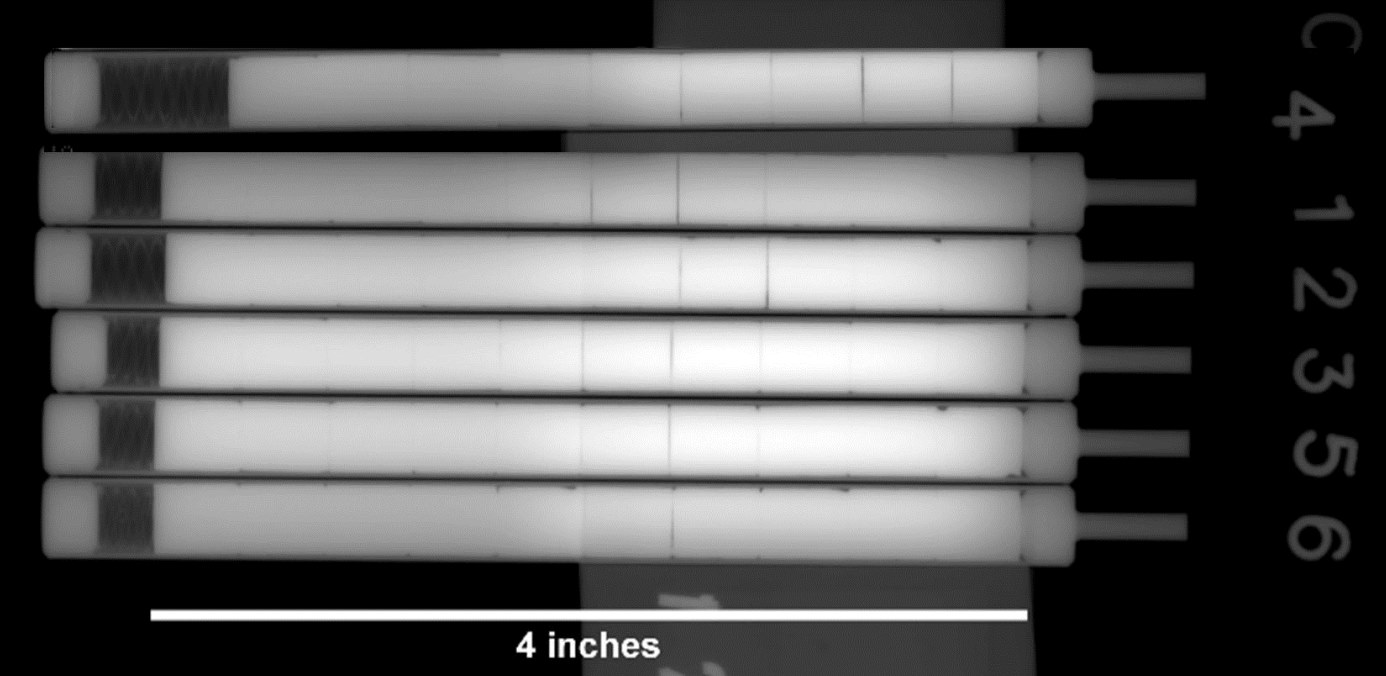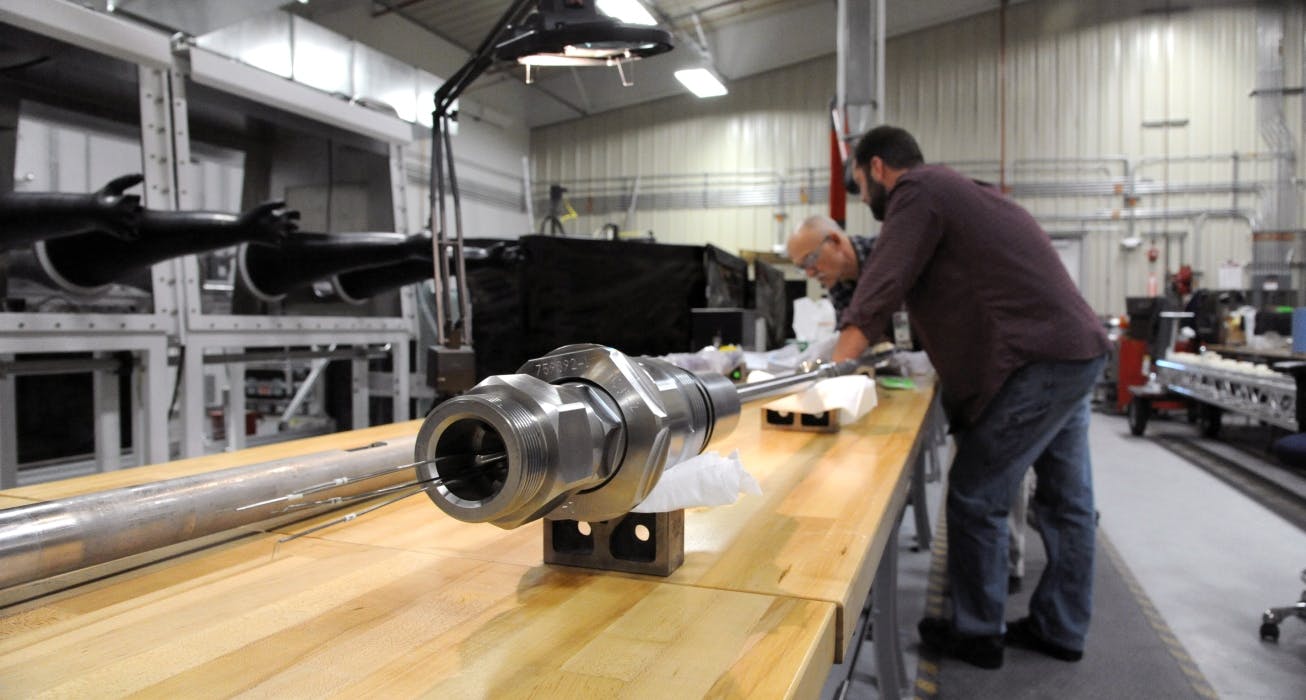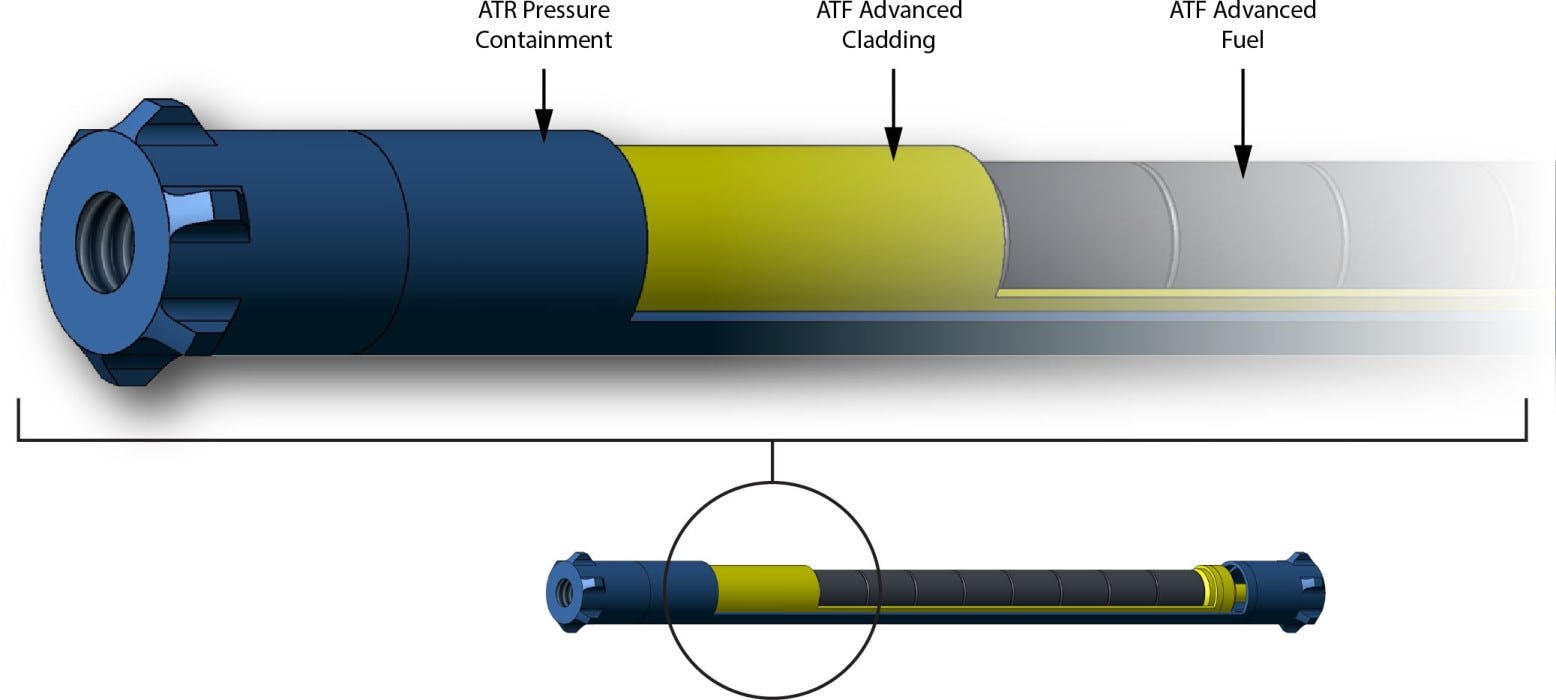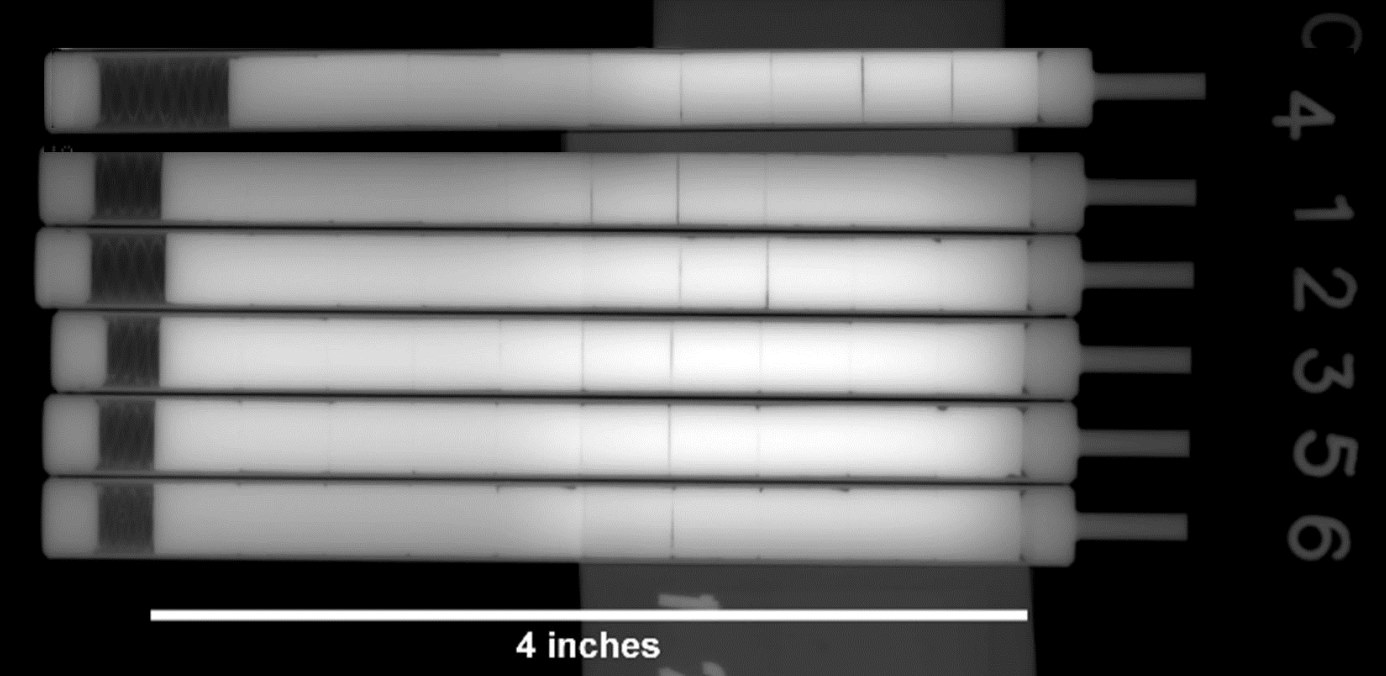Researchers take important step towards advanced nuclear fuels
The summer of 2014 marked an important milestone toward further innovation in the nation’s nuclear plants regarding the development of light water reactor nuclear fuel with enhanced accident tolerant characteristics.
For several years, nuclear researchers have designed, fabricated and tested a host of novel nuclear fuels and fuel cladding materials (enclosed tubes that house the fuel in a reactor) in laboratories across the U.S.
Now, testing of promising fuels and materials with enhanced accident tolerant characteristics in a U.S. nuclear test reactor is commencing.
Scientists and engineers from research labs and industry have prepared advanced concepts for insertion into Idaho National Laboratory’s Advanced Test Reactor.
 Photo Caption: To develop nuclear fuels with enhanced accident tolerant characteristics, INL scientists will irradiate materials in a test reactor before examining performance. Above, digital radiographs of rodlets for the first test series to evaluate interactions between fuel and cladding.
Photo Caption: To develop nuclear fuels with enhanced accident tolerant characteristics, INL scientists will irradiate materials in a test reactor before examining performance. Above, digital radiographs of rodlets for the first test series to evaluate interactions between fuel and cladding.
Accident-Tolerant Fuel
These efforts are central to the Department of Energy’s Advanced Fuels Campaign. Prior to the unfortunate events at the Fukushima-Daiichi nuclear power plants in Japan, the Fuels Campaign focused on development of higher performance fuels that could offer opportunity for power uprates or allow use of the fuel in a reactor for longer periods of time.
Following the accident in Japan, this research shifted to include both higher performance and enhanced tolerance to severe, beyond design basis accident conditions.
The proposed light water reactor (LWR) fuel and cladding improvements center on an increased tolerance to postulated beyond design basis accident scenarios within a nuclear reactor.
Several adjustments target fuel and cladding physical integrity under severe accident conditions, including enhanced retention of fission products and resistance to increased temperature. Certain novel compositions look at chemical properties as well.
 Photo Caption: Final assembly of ATR experiments occurs at the nearby Test Train Assembly Facility.
Photo Caption: Final assembly of ATR experiments occurs at the nearby Test Train Assembly Facility.
Fuel may last longer, produce more energy
The advanced LWR fuels and claddings that will be tested contain a range of modifications to the current LWR fuel system to improve fuel performance in addition to enhancing safety characteristics. Desirable performance attributes include increased power density, longer fuel cycle and operation to higher burnup.
In other words, in addition to characteristics of enhanced accident tolerance, these new fuels have the potential to last longer and produce more energy.
 Photo caption: This cutaway illustration shows the ATF-1 irradiation capsule assembly containing the fuel and cladding for the test rodlet.
Photo caption: This cutaway illustration shows the ATF-1 irradiation capsule assembly containing the fuel and cladding for the test rodlet.
For example, one technology of interest is silicon carbide-based cladding. Shannon Bragg-Sitton, the Deputy National Technical Director for the Advanced Fuels Campaign, explained the possible advantages this cladding could offer.
Fukushima’s Influence
“In Fukushima, the fuel’s zirconium cladding reacted with high temperature steam to produce hydrogen. This ultimately resulted in the explosions that were observed when the hydrogen was combusted,” Bragg-Sitton said. “A silicon carbide cladding would still react with high temperature steam, but the reactions would occur at a much slower rate with massively reduced hydrogen production. Responders would have more time to mitigate the problem.”
The technologies that have been prepared for insertion into the Advanced Test Reactor have been developed by three different industry teams — Westinghouse, AREVA, and General Electric. These small-scale rodlet experiments include both novel fuel variants in standard cladding and novel cladding on standard fuel.
Test rodlet capsules have been fully assembled and will begin irradiation in early 2015. These experiments are referred to as the “ATF-1” test series. Additional fuel and cladding concepts may be inserted into the reactor for testing later in 2015.
DOE’s Advanced Fuels Campaign
The ATF-1 experiments mark the beginning of four new test series for the Advanced Fuels Campaign. The first series will evaluate interactions between the fuel and its cladding. The materials will be irradiated in the test reactor for different lengths of time and examined for performance. The most promising concepts will advance to the next round of tests.
The remaining three LWR accident tolerant fuel test series will also be conducted at INL. The second series will be conducted in the Advanced Test Reactor and will measure fuel-cladding and cladding-coolant interactions using a water test loop. The third and fourth test series will be conducted at INL’s Transient Reactor Test (TREAT) facility.
Similar to automobile safety testing, the TREAT reactor can be used to push fuel and cladding inserted in an experiment location to failure to determine the maximum conditions the materials can withstand.
Between the third and fourth series, a lead fuel rod, containing the most promising fuel or cladding material concepts, is planned for demonstration in a commercial nuclear reactor. After each phase of testing and evaluation, the list of concepts will be further down-selected, or prioritized, until only the most promising options are left.
 Photo Caption: The cloverleaf fuel arrangement at INL’s Advanced Test Reactor provides a customizable testing environment for experimental materials.
Photo Caption: The cloverleaf fuel arrangement at INL’s Advanced Test Reactor provides a customizable testing environment for experimental materials.
A big step forward
“I think we have some good concepts to work with,” Bragg-Sitton said. “The projects we’re developing now could significantly impact nuclear energy in both the short and long term.
Putting these concepts with enhanced accident tolerant characteristics into the Advanced Test Reactor now is a big step toward the further innovation of the U.S.’s current nuclear system.”







